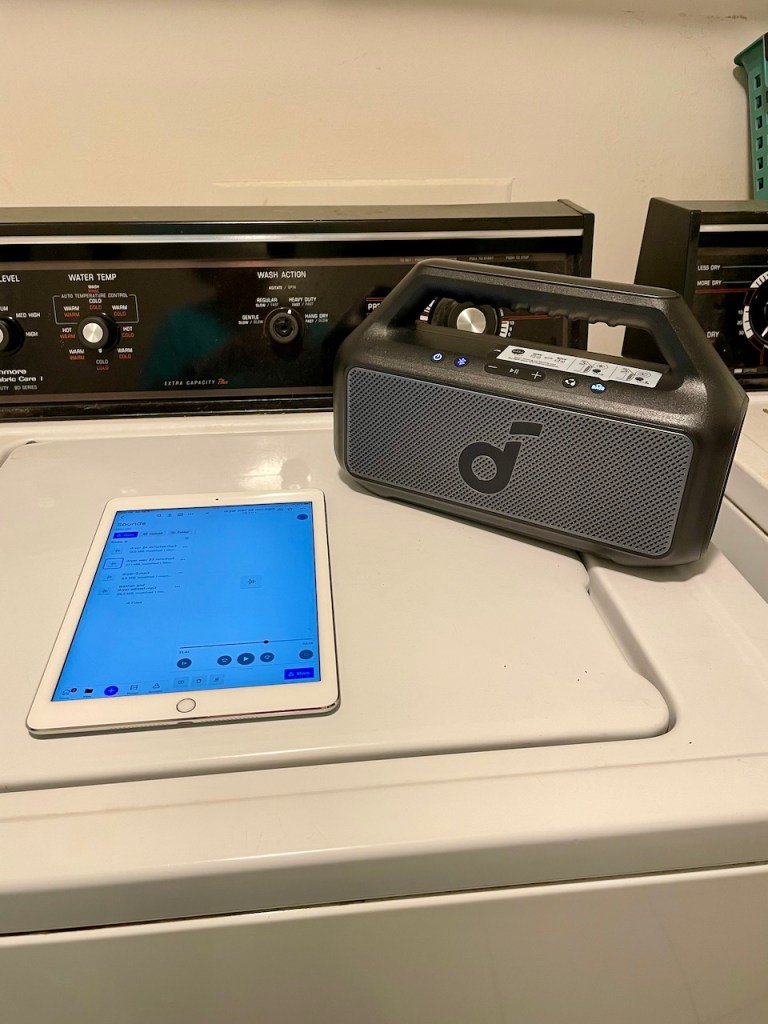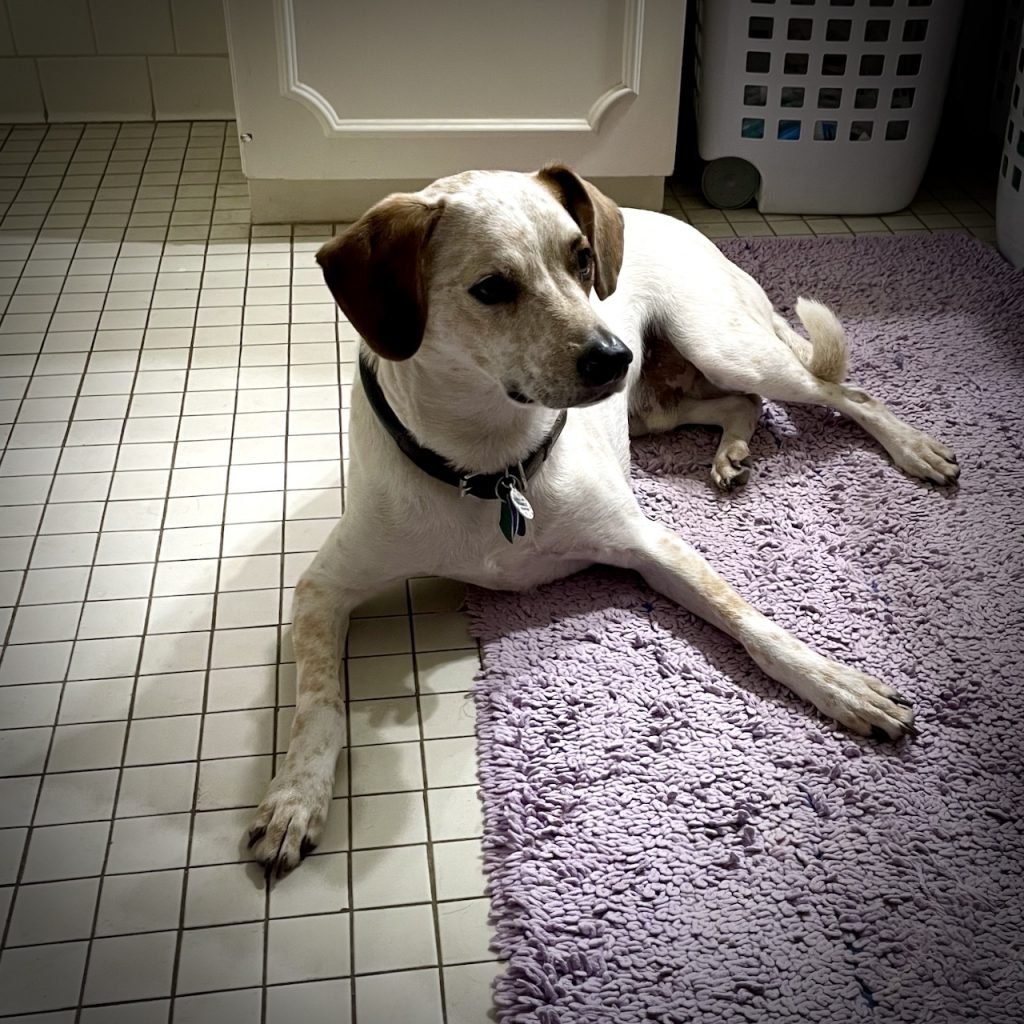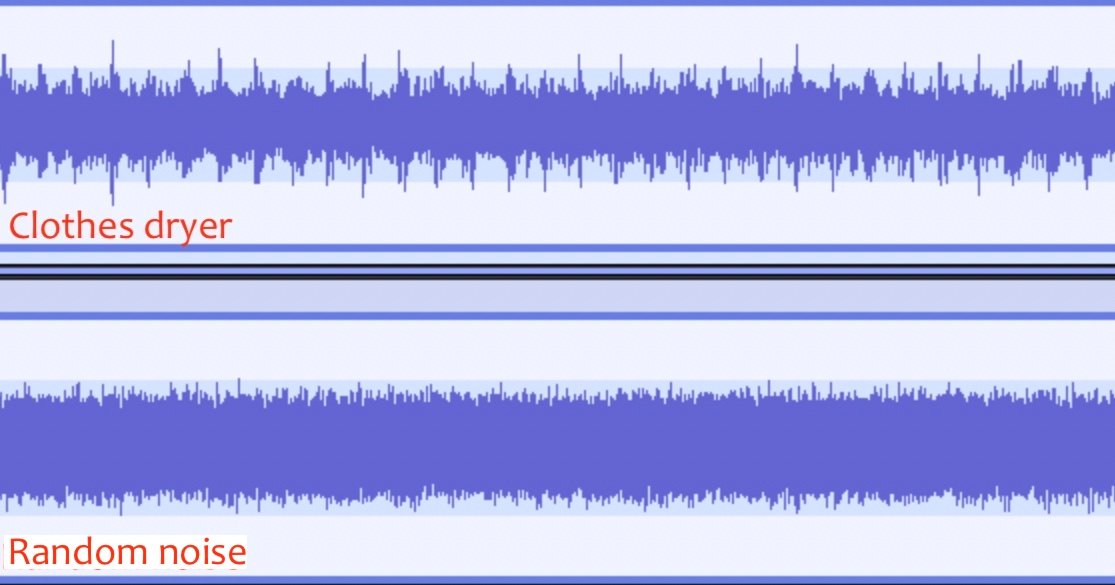No, I don’t mean you should record the thunder! Record a custom Masking noise For your dog who fears thunder, fireworks or other sudden or low -frequency sounds.
In my webinars and articles, I talk about the types of sound masking that work best. From a biophysical point of view, the best multifunction masking sounds are brown or other random noise, fans, home devices with engines and music with a lot of bass and drums. Low frequencies can mask sounds of higher frequencies, but it does not work the other way around (Kinsler et al., 1999, pp. 318–320). Therefore, I always recommend low frequencies as long as they do not scare the dog.
In addition to physics considerations, we must adapt to the individual dog. E.g. Taiko drum footage is good for masking bommer, but because of it they can trigger your dog. The way to do that is to think about what is available in your household that your dog is already in order with. You can record these known sounds, especially if they are duration sounds that include low frequencies. Devices that your dog is used to are ideal.
What did I register?

As I shrinked to cope with Lewis’ newly emerged fear, it found me that fan noise and random noise (brown, pink, white, etc.) are homogeneous. They create a hum or a whoosh or a rumble, but no immediate sounds stand out. See the lower wave form in the picture at the beginning of this post. When the masking background is homogeneous noise, it means that sudden environmental sounds stand out.
I realized that there is a household noise with which Lewis is in order that contains both a background hum/rumble, and occasionally several sudden sounds. It’s my dryer. See the top waveform in the first image. I have recommended previous “Sports shoes in the dryer” (not original for me). I’ve never tried it with Lewis because I suspect it’s too close to his triggers. It can be a perfect solution for some dogs. But a regular load of clothing is perfect for Lewis. He hears it every two or three days without any problems. There is the homogeneous sound of the engine and the cyclic sounds of the drum rotating, and the occasional noise like a heavy clothing makes a down. In the waveform image above, the various spikes on the top line represent the dunks and canyons.
My slice is also pretty helpful. If I know that storms or fireworks are coming, I plan my laundry loads in these times as a bonus for the masking team.
But I can’t wash every time the scary sounds come, not around here where we have so many storms. And I will not spend energy on unnecessary use. So now, when we get unexpected thunder, the first thing I do is throw some random clothing items in my dryer and turn it on to the air dry. But only for the time it takes to create my little system. So I play long footage I’ve already made of the dryer on my Bluetooth speaker that has a subwoofer.
It still makes me laugh and hear laundry coming from the laundry room when the appliances are not on. And now my recordings are part of my plan for any high noise event.
To make and play your own recording
I do not share my own admission to public use as it will be a foreign sound to any dog that has not lived in my household.
But you can make your own recording of a dryer or other appliance that your dog is used to.
- Use a smartphone app that can record and export in WAV or AIFF format if possible. But mp3 format is better than nothing.
- Make a 20-30 minute shoot when the rest of the house is quiet. If you take up the dryer, make sure you have a lot of different things in there.
- Once you have saved the file, if you have sound editing software, make the sound fade in so it is not suddenly when you turn it on. Otherwise, you can always start it quietly with the volume control when playing it.
- Play it back on a good speaker to make sure it doesn’t scare your dog. Start it at a distance and at a low level and gradually turn it up to an appropriate volume. Ideally, he won’t even be aware of it.
- If your dog is comfortable with it, set the audio file on one of your devices so that it can loop, or put multiple recordings on a playlist that can autoPlay.
When playing the recording, use a speaker that includes low frequencies. Don’t play it on your handheld internal speaker; They are notoriously bad at putting low frequencies. Send the sound to a wireless speaker with a good bass. I use an old tablet to play the audio files because I don’t want the devices I use every day attached to the speaker. You can get some unpleasant surprises and scare your dog that way.
Here is a link to the speaker I have. From the next room it is difficult for me to see the difference between the dryer and my recordings. And although Lewis can probably tell the difference, the recording does not bother him and is a useful addition to the masking environment.
Sound comparison
Here is an auditory demo showing the difference between homogeneous brown noise and the dryer with its dents and clunks. You hear in order: 1) brown noise; 2) my dryer uptake; and 3) the two combined. It is a good idea to double or triple with masking sources if your dog is in order with them all (separately and together).

How much does masking help?
Masking is a management technique. It’s not perfect because there are no sounds we can generate at home that can mask the highest thunderstorms and bombing without being scary self. But masking can make the distant booms inaudible and moderate booms mix more in the background. On the lucky days when the storms do not get close, masking can protect your dog effectively. And on the worse days, it can at least put a buck in the total exposure.
To directly tackle our dogs’ fears, evidence suggests that medicine, ad hoc fashion conditioning and relaxation training are our best tools (Riemer, 2020 & 2023).
Copyright 2025 Eileen Anderson
Related posts
References
- Kinsler, Le, Frey, AR, Coppens, AB, & Sanders, JV (1999). Fundamentals of Acoustics (4th ed.). Wiley.
- Riemer, S. (2020). Efficiency of treatments of fireworks fears in dogs. Journal of Veterinary BehaviorAt 3761-70.
- Riemer, S. (2023). Therapy and the prevention of noise fear in dogs – a review of the current proof of practitioners. AnimalAt 13(23), 3664.
